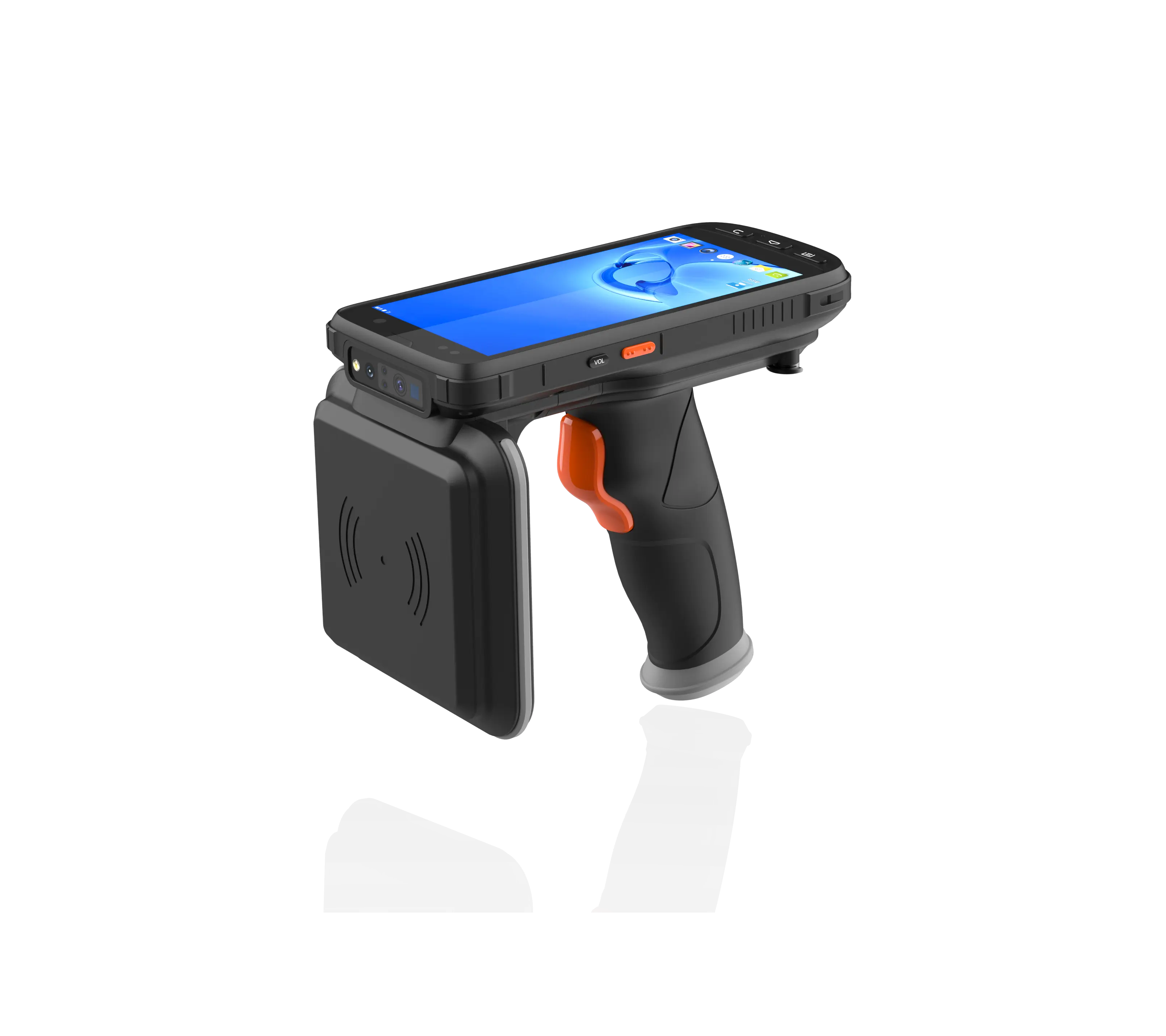أحدثت تقنية تحديد ترددات الراديو (RFID) ثورة في الطريقة التي تدير بها الشركات مخزونها والتحكم بها. تلعب ملصقات وقارئات RFID دورًا حاسمًا في تعزيز الكفاءة والدقة والرؤية في عمليات إدارة المخزون. يستكشف هذا المقال الميزات والفوائد والتطبيقات الرئيسية لملصقات وقارئات RFID في سياق مراقبة المخزون.

ملصقات RFID

- التعريف والوظيفة: ملصقات RFID هي علامات صغيرة تحتوي على معلومات مخزنة إلكترونياً. وهي تتألف من شريحة تعريف بالترددات اللاسلكية وهوائي، مما يمكنها من التواصل لاسلكيًا مع قارئات تعريف الترددات اللاسلكية. يتم إرفاق ملصقات RFID بالعناصر أو المنصات أو الحاويات، مما يوفر معرّفًا فريدًا لكل منها.
- أنواع ملصقات RFID:
- ملصقات RFID السلبية: تعمل بالطاقة المستمدة من الطاقة المستقبلة من قارئات RFID.
- ملصقات RFID النشطة: تحتوي على مصدر طاقة (بطارية) ويمكنها نقل البيانات عبر مسافات أطول.
- فوائد ملصقات RFID في مراقبة المخزون:
- التتبع في الوقت الحقيقي: تسمح ملصقات RFID بتتبع المخزون في الوقت الفعلي، مما يوفر معلومات دقيقة ومحدثة.
- مسح ضوئي سريع: على عكس الرموز الشريطية، يمكن مسح ملصقات RFID ضوئيًا في وقت واحد ولا تتطلب خط رؤية مباشر، مما يتيح إجراء عمليات فحص أسرع وأكثر كفاءة للمخزون.
- تعريف فريد: يحتوي كل ملصق RFID على معرّف فريد، مما يقلل من فرص حدوث أخطاء في بيانات المخزون.

أجهزة قراءة الترددات اللاسلكية
- التعريف والوظيفة: قارئات RFID هي الأجهزة التي تتواصل مع ملصقات RFID، وتلتقط المعلومات المخزنة على الملصقات. يمكن أن تكون هذه القارئات ثابتة أو محمولة باليد، وتلعب دورًا حاسمًا في جمع ونقل البيانات من ملصقات التعريف بالترددات اللاسلكية إلى نظام إدارة المخزون.
- أنواع قارئات RFID:
- قارئات RFID الثابتة: يتم تركيبها في مواقع محددة مثل نقاط الدخول أو المخارج أو بوابات المخازن.
- قارئات RFID المحمولة باليد: أجهزة محمولة تتيح المرونة في المسح وجمع البيانات.
- فوائد قارئات RFID في مراقبة المخزون:
- الكفاءة: تتيح قارئات RFID التقاط البيانات بسرعة ودقة مما يحسن كفاءة إدارة المخزون بشكل عام.
- الأتمتة: تقلل الطبيعة الآلية لتقنية RFID من الحاجة إلى الإدخال اليدوي للبيانات، مما يقلل من الأخطاء البشرية.
- الرؤية في الوقت الحقيقي: توفر قارئات RFID رؤية فورية لمستويات المخزون في الوقت الفعلي، مما يساعد الشركات على اتخاذ قرارات مستنيرة.
تطبيقات RFID في مراقبة المخزون

- إدارة المستودعات: تعمل تقنية RFID على تبسيط عمليات المستودعات من خلال توفير معلومات دقيقة وفي الوقت الفعلي حول موقع وحالة أصناف المخزون.
- رؤية سلسلة التوريد: تساعد تقنية RFID على تعزيز رؤية سلسلة التوريد من خلال تمكين الشركات من تتبع حركة البضائع عبر سلسلة التوريد بأكملها، من التصنيع إلى التوزيع.
- إدارة مخزون التجزئة: يستخدم بائعو التجزئة تقنية RFID لتحسين دقة المخزون وتقليل نفاد المخزون وتعزيز تجربة التسوق الشاملة للعملاء.
الخاتمة
أصبحت ملصقات وقارئات RFID أدوات لا غنى عنها في أنظمة مراقبة المخزون الحديثة. وتوفر هذه التقنية العديد من المزايا، بما في ذلك التتبع في الوقت الحقيقي، وتحسين الكفاءة، وتعزيز الدقة. مع استمرار الشركات في تبني تقنية RFID لإدارة المخزون، فإن التكامل السلس لملصقات وقارئات RFID سيلعب دورًا محوريًا في تحسين عمليات سلسلة التوريد وضمان نجاح استراتيجيات مراقبة المخزون.

